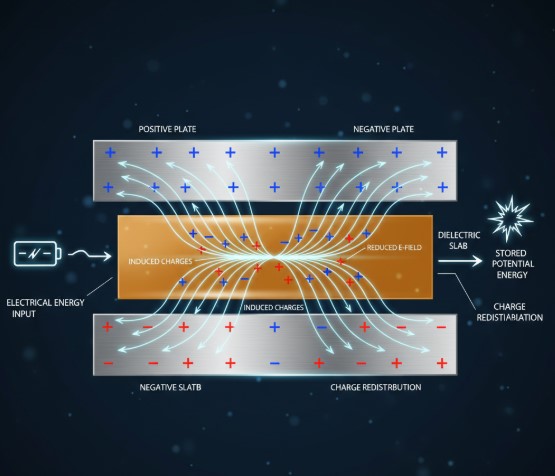Rutherford atomic model explains the nuclear structure of the atom with a bold claim: nearly all mass and positive charge reside in an extremely small nucleus while electrons occupy the surrounding space. Proposed after the famous gold-foil experiment, Rutherford atomic model explains the nuclear structure of the atom by overturning the “plum pudding” picture and introducing a concentrated center capable of deflecting energetic alpha particles. In this article, we retrace the experiment, derive the scattering law, compare models, and show why this was a foundational leap toward modern quantum physics.
From experimental setup and data reduction to MathJax-powered derivations of the Rutherford differential cross-section, the narrative keeps returning to one theme: Rutherford atomic model explains the nuclear structure of the atom more convincingly than its predecessors by matching quantitative scattering patterns. We also cover limits of the model and how Niels Bohr and quantum mechanics refined it to explain spectral lines and atomic stability without abandoning the nuclear core Rutherford made central.
Table of Contents
- Why Rutherford Atomic Model Mattered
- The Geiger–Marsden Gold-Foil Experiment
- Rutherford Scattering Formula (MathJax)
- Comparing Models: Rutherford Vs Thomson Vs Bohr
- Quantitative Checks With MathJax
- Strengths And Limitations
- From Rutherford To Bohr And Quantum Theory
- Lab Notes: Replicating Rutherford In Class
- Common Student Questions
- Big-Picture Legacy
We Also Published
Why Rutherford Atomic Model Mattered
Before 1911, J. J. Thomson’s model pictured electrons embedded in a diffuse positive “pudding.” If that had been correct, energetic alpha particles should have experienced only tiny, smoothly distributed electric forces, producing minimal large-angle deflections. Rutherford atomic model explains the nuclear structure of the atom by positing a compact nucleus whose strong Coulomb field can deflect a small fraction of alpha particles through dramatic angles, even sending a few backward—exactly what the data showed.
“It was almost as incredible as if you fired a 15-inch shell at a piece of tissue paper and it came back and hit you.”
Ernest Rutherford
The Geiger–Marsden Gold-Foil Experiment
In Rutherford’s laboratory, Hans Geiger and Ernest Marsden fired alpha particles (helium nuclei, charge ##+2e##) at an ultrathin gold foil and observed scintillations on a zinc sulfide screen. Most alphas passed through essentially undeflected, but a tiny fraction scattered by large angles, some even beyond ##90^\circ##. Rutherford atomic model explains the nuclear structure of the atom by attributing these rare, violent deflections to close encounters with a concentrated positive nucleus of charge ##+Ze## (for gold, ##Z=79##).
Experimental Features
- Highly Collimated Alpha Source And Thin Metallic Foil To Minimize Multiple Scattering.
- Moveable Scintillation Screen Allowing Angular Distribution Measurements.
- Tally Of Scintillation Counts Vs. Scattering Angle To Extract A Differential Cross-Section.
Rutherford Scattering Formula (MathJax)
Consider an alpha particle with kinetic energy ##E## and charge ##+2e## incident on a nucleus of charge ##+Ze##. Classical Coulomb repulsion yields the celebrated Rutherford differential cross-section:
###\frac{d\sigma}{d\Omega} = \left( \frac{1}{4\pi\varepsilon\_0}\frac{2Ze^2}{4E} \right)^{\!2} \frac{1}{\sin^4\!\left(\frac{\theta}{2}\right)} = \left( \frac{Z z e^2}{16\pi\varepsilon\_0 E} \right)^{\!2} \frac{1}{\sin^4\!\left(\frac{\theta}{2}\right)}###
Here ##z=2## for alpha particles. The dramatic ##\sin^{-4}\!\left(\frac{\theta}{2}\right)## dependence explains why large-angle scattering is rare but not impossible. Rutherford atomic model explains the nuclear structure of the atom by predicting exactly this angular law, which matched observations across multiple targets and energies (with small corrections at very high energies where nuclear size and screening matter).
Impact Parameter And Deflection
The impact parameter ##b## (closest approach for a straight-line trajectory) relates to the scattering angle ##\theta## by ###\cot\!\left(\frac{\theta}{2}\right) = \frac{2E b}{k} \quad \text{with}\quad k=\frac{1}{4\pi\varepsilon\_0} Z z e^{2}.### Small ##b## (close approach) corresponds to large ##\theta##. This mapping converts a beam’s geometric profile into an angular distribution consistent with Rutherford’s formula, reinforcing that Rutherford atomic model explains the nuclear structure of the atom via pointlike-seeming nuclear centers at the energies used.
Comparing Models: Rutherford Vs Thomson Vs Bohr
The table summarizes predictions and shortcomings. Rutherford atomic model explains the nuclear structure of the atom and angular scattering; Bohr’s model adds quantized orbits explaining spectra; Thomson’s model fails on large-angle deflections.
| Feature | Thomson Model | Rutherford Model | Bohr Model |
|---|---|---|---|
| Charge Distribution | Diffuse Positive Sphere With Embedded Electrons | Central Positive Nucleus, Electrons Around | Nuclear Core With Quantized Electron Orbits |
| Explains Large-Angle Scattering? | No | Yes (Rutherford Law) | Yes (Same Nucleus Assumption) |
| Spectral Lines | No | No (Classical Electrons Would Radiate) | Yes (Quantized Transitions) |
| Stability Of Atom | Problematic | Classically Unstable (Radiation Loss) | Stable Orbits By Postulate |
Quantitative Checks With MathJax
Closest Approach (Head-On): For an alpha of kinetic energy ##E## approaching directly toward charge ##+Ze##, classical turning point ##r\_{\min}## satisfies energy balance: ###E = \frac{1}{4\pi\varepsilon\_0}\frac{Z z e^{2}}{r\_{\min}} \;\Rightarrow\; r\_{\min}=\frac{1}{4\pi\varepsilon\_0}\frac{Z z e^2}{E}.### For gold and MeV alphas, ##r\_{\min}## is far smaller than atomic size, reinforcing a compact nucleus—consistent with how Rutherford atomic model explains the nuclear structure of the atom.
Angular Distribution Normalization: Integrating ###\frac{d\sigma}{d\Omega}\propto \sin^{-4}\!\left(\frac{\theta}{2}\right)### over solid angle yields a finite total cross-section only with angular cutoffs reflecting foil thickness and screening. The need for such cutoffs foreshadows finite nuclear size and electron screening—early signs that the model, though right about the nucleus, would need quantum refinements.
Strengths And Limitations
| Aspect | Strength | Limitation |
|---|---|---|
| Scattering Data | Explains Large-Angle Deflections Quantitatively | Breaks Down Near Nuclear Dimensions/High Energies |
| Atomic Architecture | Correctly Centralizes Positive Charge/Mass | Classical Electrons Would Spiral Into Nucleus |
| Predictive Reach | Universal Coulomb Scattering Law | No Spectral Line Quantization; No Electron Shells |
From Rutherford To Bohr And Quantum Theory
Rutherford atomic model explains the nuclear structure of the atom but leaves stability and spectra unresolved. Bohr (1913) added quantized angular momentum ##m e v r = n\hbar## and discrete energy levels for hydrogen, reproducing Balmer lines. Later, full quantum mechanics replaced orbits with orbitals (solutions to the Schrödinger equation), fully addressing atomic stability and chemical regularities while retaining Rutherford’s nuclear core as a given.
Historical Timeline
| Year | Milestone | Significance |
|---|---|---|
| 1897 | Electron Discovered (J. J. Thomson) | Opens Atomic Structure Question |
| 1909–1911 | Gold-Foil Scattering (Geiger–Marsden) | Large-Angle Deflections Observed |
| 1911 | Rutherford’s Nuclear Model | Core Positive Nucleus Proposed |
| 1913 | Bohr’s Quantized Atom | Explains Hydrogen Spectrum |
| 1925–1927 | Quantum Mechanics (Heisenberg, Schrödinger, Dirac) | Modern Atomic Theory Emerges |
Lab Notes: Replicating Rutherford In Class
While real alpha sources require licensing, educators can simulate scattering with charged pith balls or with Monte-Carlo software to visualize angular distributions. This preserves the core logic: a concentrated center causes occasional large-angle deflections, reinforcing how Rutherford atomic model explains the nuclear structure of the atom from rare but telling events.
Common Student Questions
- Why Do Most Alphas Pass Straight Through? Because atoms are mostly empty space; nuclei occupy an extremely small volume.
- Why Are Some Deflections So Large? Close encounters with the nucleus create strong Coulomb repulsion.
- Why Is Rutherford’s Atom Classically Unstable? Accelerating electrons would radiate; quantum postulates resolve this.
Big-Picture Legacy
The nuclear atom reshaped twentieth-century physics and chemistry, enabling models of periodic trends, chemical bonding, radioactivity, and nuclear energy. Even as quantum mechanics replaced planetary orbits with orbital clouds, the nucleus remained—Rutherford atomic model explains the nuclear structure of the atom as a lasting architectural truth, with later theories refining electron behavior rather than undoing the nuclear core.
Also Read
From our network :
- Optimizing String Concatenation in Shell Scripts: quotes, arrays, and efficiency
- Limit Superior and Inferior
- Economic Importance of Soybeans in America: The $60 Billion Crop That Feeds the World
- The Diverse Types of Convergence in Mathematics
- Bitcoin Hits $100K: Crypto News Digest
- Limits: The Squeeze Theorem Explained
- Optimizing String Concatenation in JavaScript: Template Literals, Join, and Performance tips
- Bitcoin price analysis: Market signals after a muted weekend
- JD Vance Charlie Kirk: Tribute and Political Strategy
RESOURCES
- No results found.







0 Comments